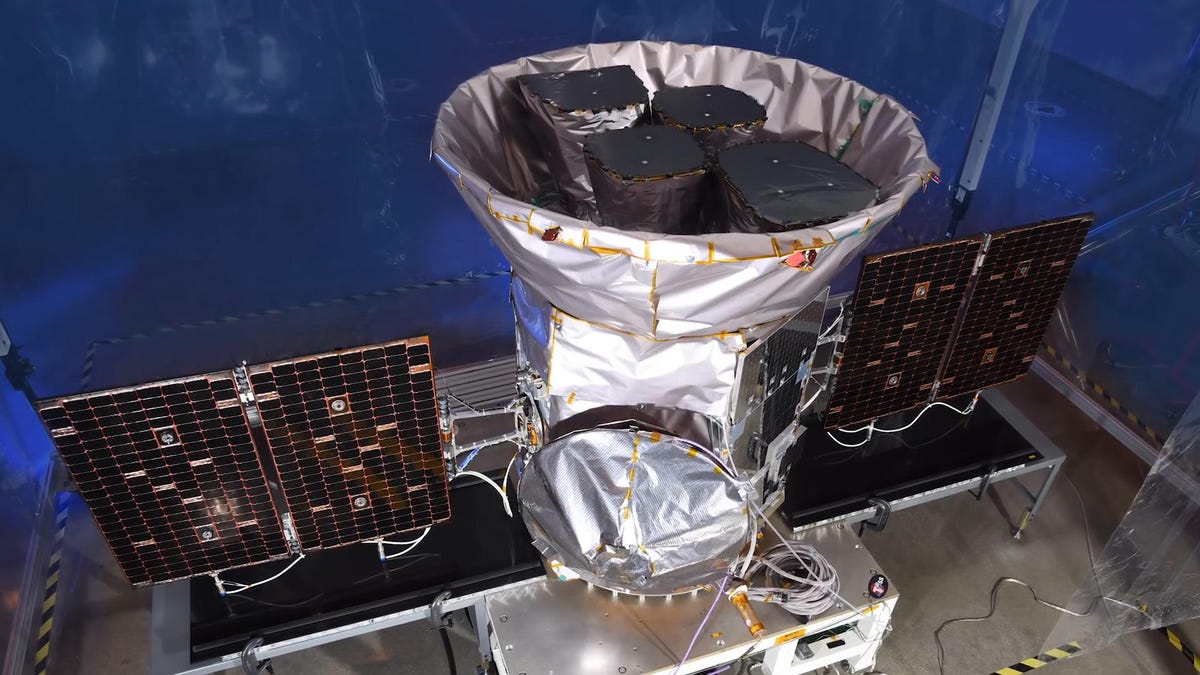NASA telescope discovers three intriguing planets hiding around nearby star
NASA's TESS mission found a super-Earth and two sub-Neptunes in our cosmic neighborhood.

TESS before launch.
NASA's Transiting Exoplanet Survey Satellite (TESS) just scored another science triumph with the discovery of three fascinating planets hanging out at a nearby star. One is a super-Earth, slightly bigger than our own planet. The other two are Neptune-like exoplanets, the likes of which you won't find in our own solar system.
The star is known as "TESS Object of Interest 270," or TOI 270 for short. Its more formal name is "UCAC4 191-004642," but that's a mouthful. The star is 40% smaller than our sun and is also about a third cooler. It hangs out 73 light-years away, which qualifies it as a neighbor.
TESS found TOI 270's intriguing planets by looking for a dimming of the host star that indicates a planet passing around it.
The planet closest to the star is about 25% bigger than Earth and is likely rocky. This "super-Earth" is called TOI 270 b. Don't expect to send colonists there. NASA described it as "oven-hot" thanks to its proximity to its star.
The other planets, TOI 270 c and TOI 270 d, are likely closer to gas-giant Neptune in makeup. "Planet c and d might best be described as mini-Neptunes, a type of planet not seen in our own solar system," said NASA.
This NASA infographic shows how TOI 70's planets compare to Earth.
The exoplanets' discovery is just the start. "TOI-270 will soon allow us to study this 'missing link' between rocky Earth-like planets and gas-dominant mini-Neptunes, because here all of these types formed in the same system " said Maximilian Günther, lead author of a paper published in the journal Nature Astronomy on Monday.
TESS launched in 2018 and has been on a roll with exoplanet finds, including spotting a planet with three suns.
Astronomers plan to take another look at TOI 270 after NASA's next-generation James Webb Space Telescope launches, hopefully in 2021.
TESS is great at spotting exoplanets of all kinds, but what we're really excited about is finding planets that may have liquid water and could potentially support life. Don't count TOI 270 out on that front. There may even be more planets in the system waiting to be discovered.
Originally published July 29, 10:39 a.m. PT

